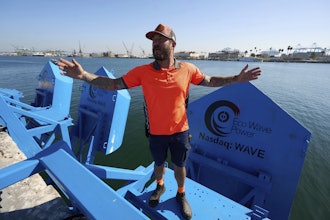It was October of 2016, and an American Airlines jetliner sat grounded on the runway of Chicago’s O’Hare airport because it had inexplicably burst into flames.
I don’t care what they say – there’s not a person out there who flies regularly and doesn’t, once in a while, think about the worst-case scenario happening with their aircraft – even if your vision of that is snakes literally everywhere. Samuel L., I’m looking in your direction.
According to CBS Chicago, the National Transportation Safety Board determined that a disk in the engine had broken, sending shards of metal through both the wing structure and a fuel tank. The failed disk was later found, broken into four pieces and scattered up to a half mile away from the crash.
The manufacturer of the disk, General Electric, blamed the incident on a flaw in the alloy used to manufacture the disk – but said there hadn’t been another incident reported like it in the 30 years it had used this common nickel-metal alloy.
The NTSB urged a new approach to inspection, saying there was no real way during the manufacturing process to determine whether these cracks existed, nor could inspections between flights uncover them. So while the occurrence of this was clearly quite rare, it warranted a new procedure that help root out the defects before this happened again – which it shouldn’t, because apparently almost all airliners use this metal alloy, or something similar, in their engines, and this is the first time it’s resulted in a fiery evacuation.
And speaking of, the board also faulted the airline crew for a few missteps in evacuating the plane, which led to one serious injury and 20 minor ones.
Fair enough. But let it also be noted that the pilots were able to abort the takeoff of the plane when it was barreling down the runway at 147 miles per hour – a mere 7 miles per hour shy of the limit for stopping it safely. A Chicago Fire Department official at the time noted that this could have been far more catastrophic had it left the ground.






















